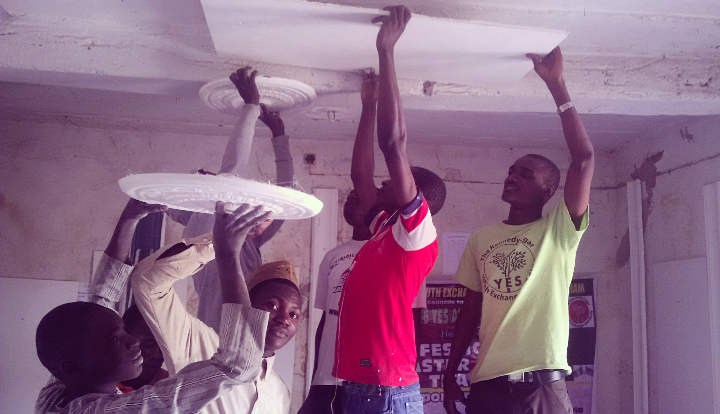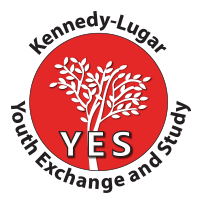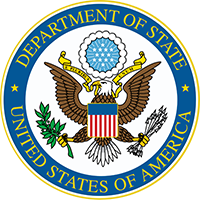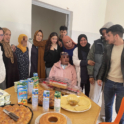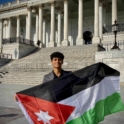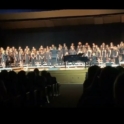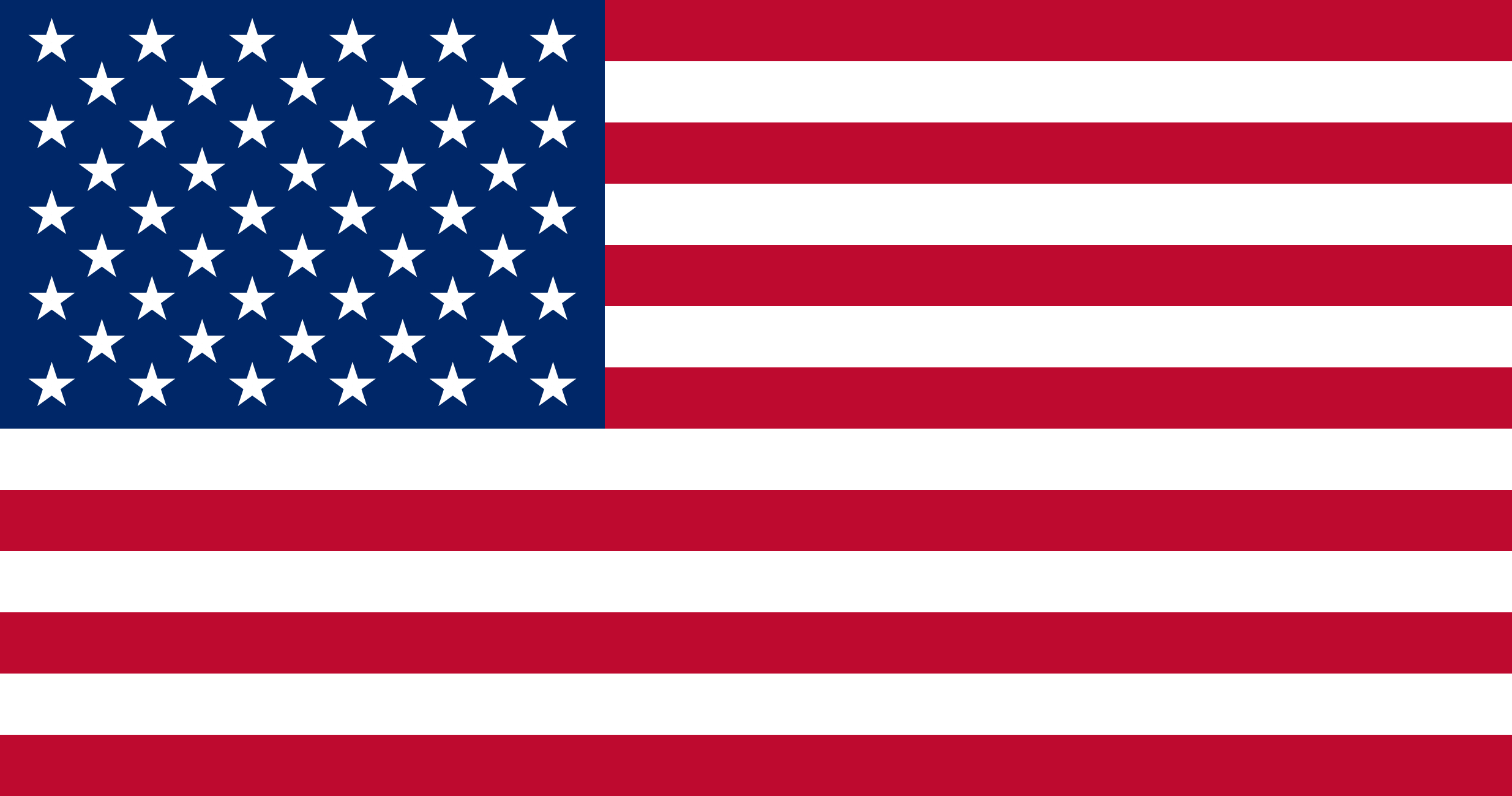Maryame has taken the lessons learned from her exchange year to make a difference in her community.
STORIES
The Art of Plaster of Paris: Job Skills for Nigerian Youth
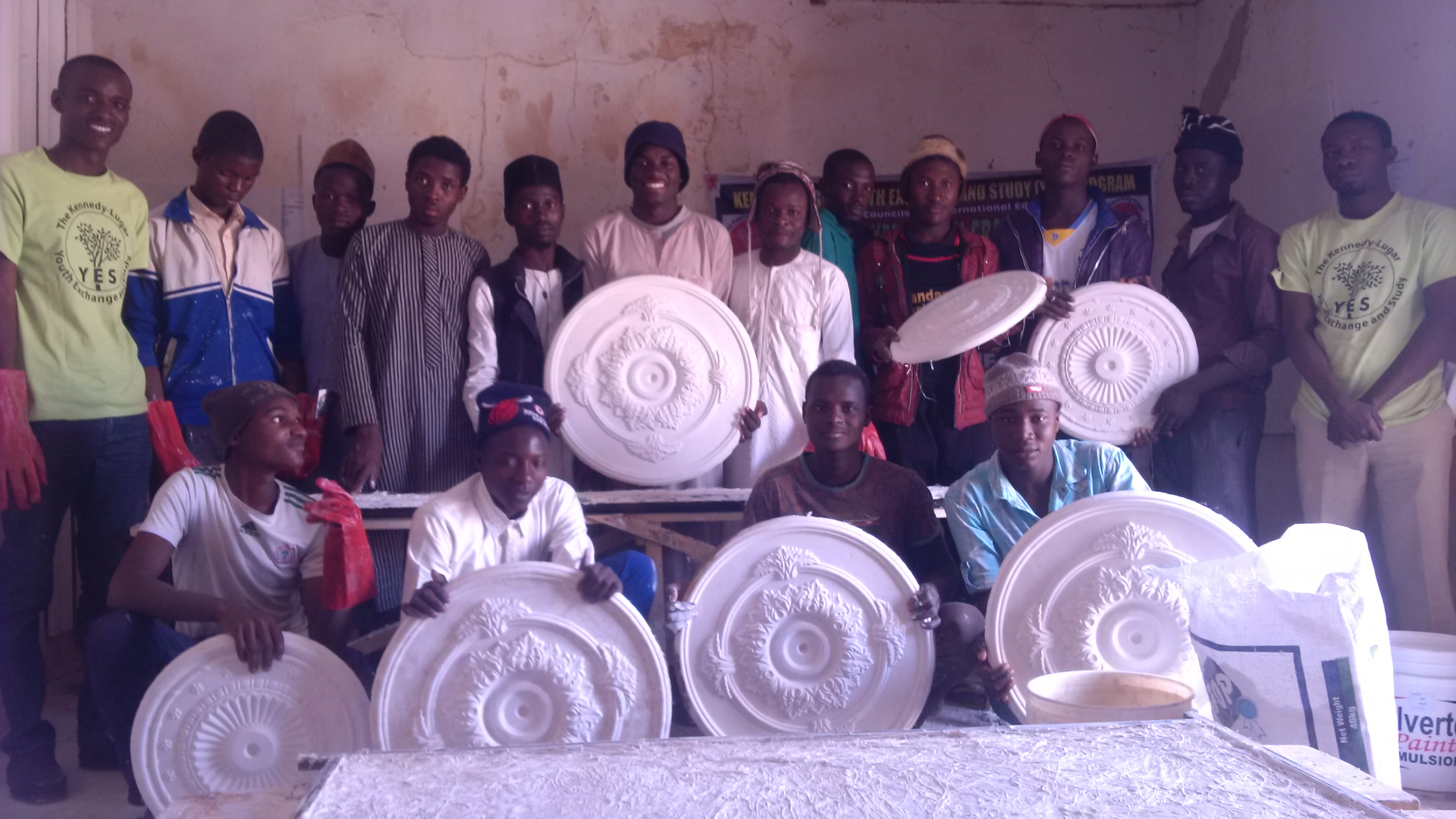
By Kamal Shehu Adamu, YES 2005-2006, Nigeria, hosted by Iowa Resources for International Service in Des Moines, IA
My name is Kamal Shehu Adamu from Kaduna State, Nigeria and I am an architect by profession. My experience from the YES program is one reason I believe that I am excelling in my career today. The Technology Today course I took at Theodore Roosevelt High School in Des Moines, fueled my passion for architecture, and when I returned home, I decided to follow my dream.
My city, Zaria, is one of the historic cities in Nigeria. It is one of the original seven city-states, or kingdoms, of the Hausa tribe established in the middle of the 15th century (as legend has it) by the seven sons of a hero prince. Zaria is known to have numerous artisans engaged in traditional crafts such as leather work, dyeing and cap making, as well as those who are furniture makers. It is also a center of the textile industry and for over 200 years has handmade elaborately embroidered robes that are worn by men throughout the world.
Zaria is also the home to the largest university in Nigeria - Ahmadu Bello University - a home to the Nigerian College of Aviation Technology (NCAT), the only aviation training school in the country, the Energy Research Institute and also the Nigerian Agricultural Research Centers. I am a proud alumnus of the prestigious Ahmadu Bello University. The university currently has about ten YES alumni enrolled, and I am one of two YES alumni pursuing a Master’s degree.
In addition to this rich history, we cannot go without mentioning Zaria’s effervescent youth with incredible potential to be artisans. If you tour the city you will see examples that highlight their prowess in artistry, sculpture and motif designs. Their zeal and talent led me to explore ways with which I can complement and improve their skills and introduce new technology in the art of Plaster of Paris, which is in demand in the job market.
With recent developments in building, Plaster of Paris has become a field in which professionals are employed from neighboring countries, such as Benin Republic and Togo, at top salaries and costs to builders. With Nigeria’s booming population there is a high rate of unemployed youth, even among young artisans. As such, I felt there was a need to provide youth with up-to-date job skills and so I launched my project, Plaster of Paris (POP) Training, with a grant from American Councils for International Education.
The project targeted youth from Muchia Community in Sabon Gari, ranging from 18-24 years of age, who are jobless and/or school dropouts. With the help of other YES alumni, we handed out flyers about the POP Training. The response was so amazing that many interested youth attended the first recruitment meeting. We conducted interviews and selected 25 participants who we felt had the strongest statement of intent. For the others that were not selected we asked them to apply for a future training.
At the orientation, the participants learned about, and selected, building materials and tools for making POP and learned about price variations. We were very lucky to have a workspace at a professional workshop that was donated by a group of artisans. Before starting the training we took the participants to visit sites with examples of Plaster of Paris works to give them a visual comprehension of the creation process.
The training, led by five instructors, lasted for 12 weeks. Participants were introduced to the historical background of POP as well as some theory and concepts. In the practical aspect, participants were introduced to the tools, ways of handling them, and then procedures in mixing, molding and fixing. After assessing their capability in POP design and construction, participants earned a certification as Plaster of Paris artisans.
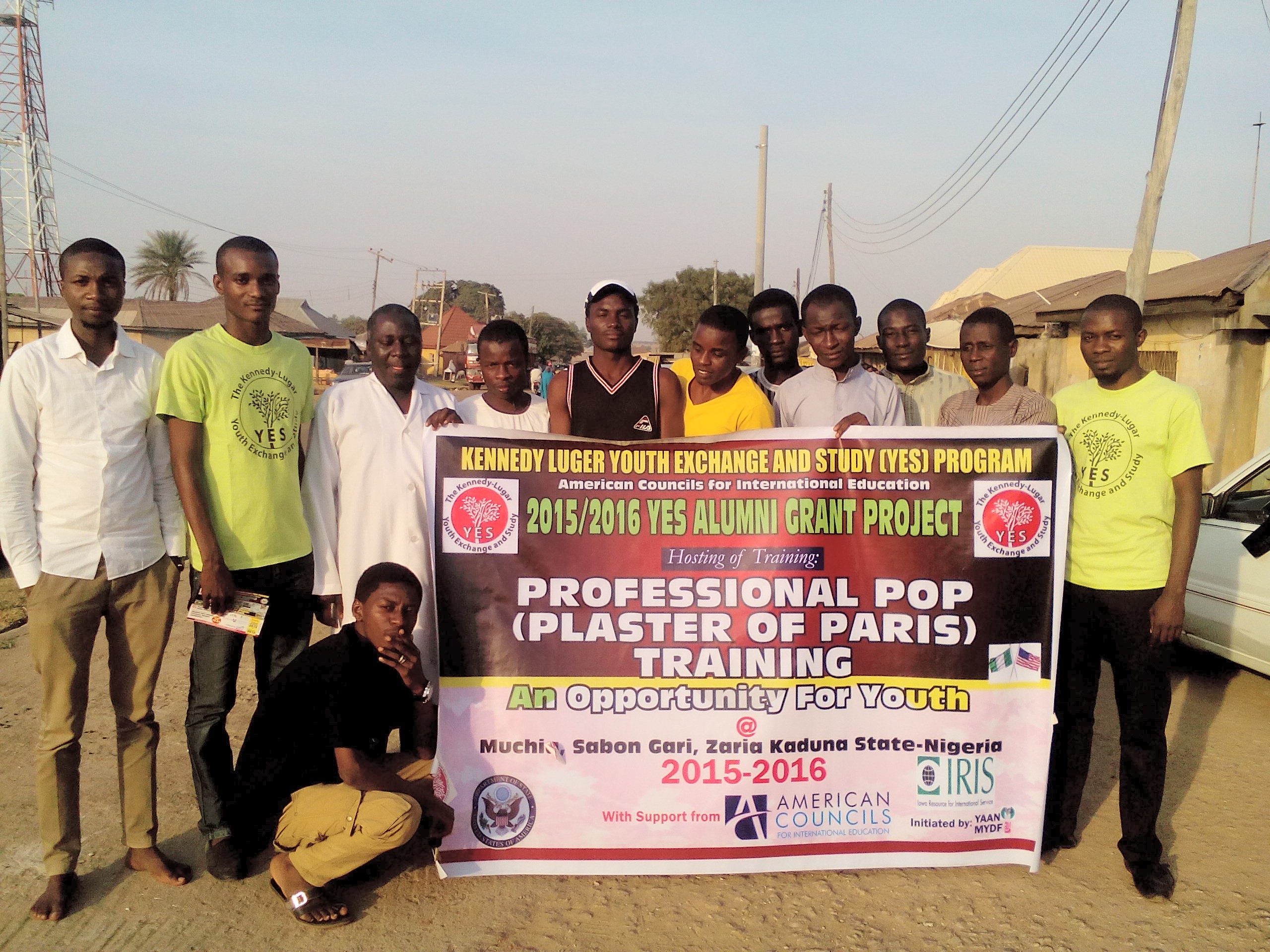
At the end of the training, we provided the participants with an excellent opportunity to showcase their abilities to a group of reputable Plaster of Paris professionals who gave them technical feedback.
This project was quite successful and I hope just the beginning. I am optimistic that this will go a long way in the development of my community and I hope that the interest and training in the art of POP will be broadened within the locality and will provide new jobs. We plan to continue this project, and my long term hope is that someday these participants will be teachers who will not only impart what they acquired but add to it.
The most inspiring result of this project was the response from both external observers and the participants. Most of the participants claimed to have gained self-esteem and self-worth from the training; it made them realize their true potential by findging ways in which they can diversify their skills. The trained youth have already worked at several construction sites both within and outside Zaria. Many of them contributed to a fund which has allowed us to rent a workshop space for further trainings in the upcoming year.
We strategized how to attract the attention of non-governmental organizations, politicians, and philanthropists to contribute to the development of the community by supporting this project and perhaps similar trainings in other mediums of art. We consulted with elders in the community for their help and we met with the Special Assistant to the Kaduna State Governor on Job Creation who emphasized the government’s interest in developing job skills for youth and offered to use our trainees as instructors in the government’s program in the future.
I cannot conclude without showing my profound gratitude to American Councils for International Education for funding this grant, to Dr. Saidu Yakubu, Nigerian YES National Coordinator and to Iowa Resource for International Service (IRIS) which runs the YES program in Nigeria. I want to thank Architect Ahmed Musa Musa, my fellow YES alumni, Ishaq Adamu and Daniel Suleiman, the Chairman of Muchia Community Development Association, Mallam Idris Abdullahi, all the participants, the supervisors and volunteers and to my family for their support towards the successful completion of this project. Finally, I am grateful for the opportunity provided to me by the U.S. Department of State Bureau of Educational and Cultural Affairs which sponsors the Kennedy-Lugar YES program.
Thank you!
